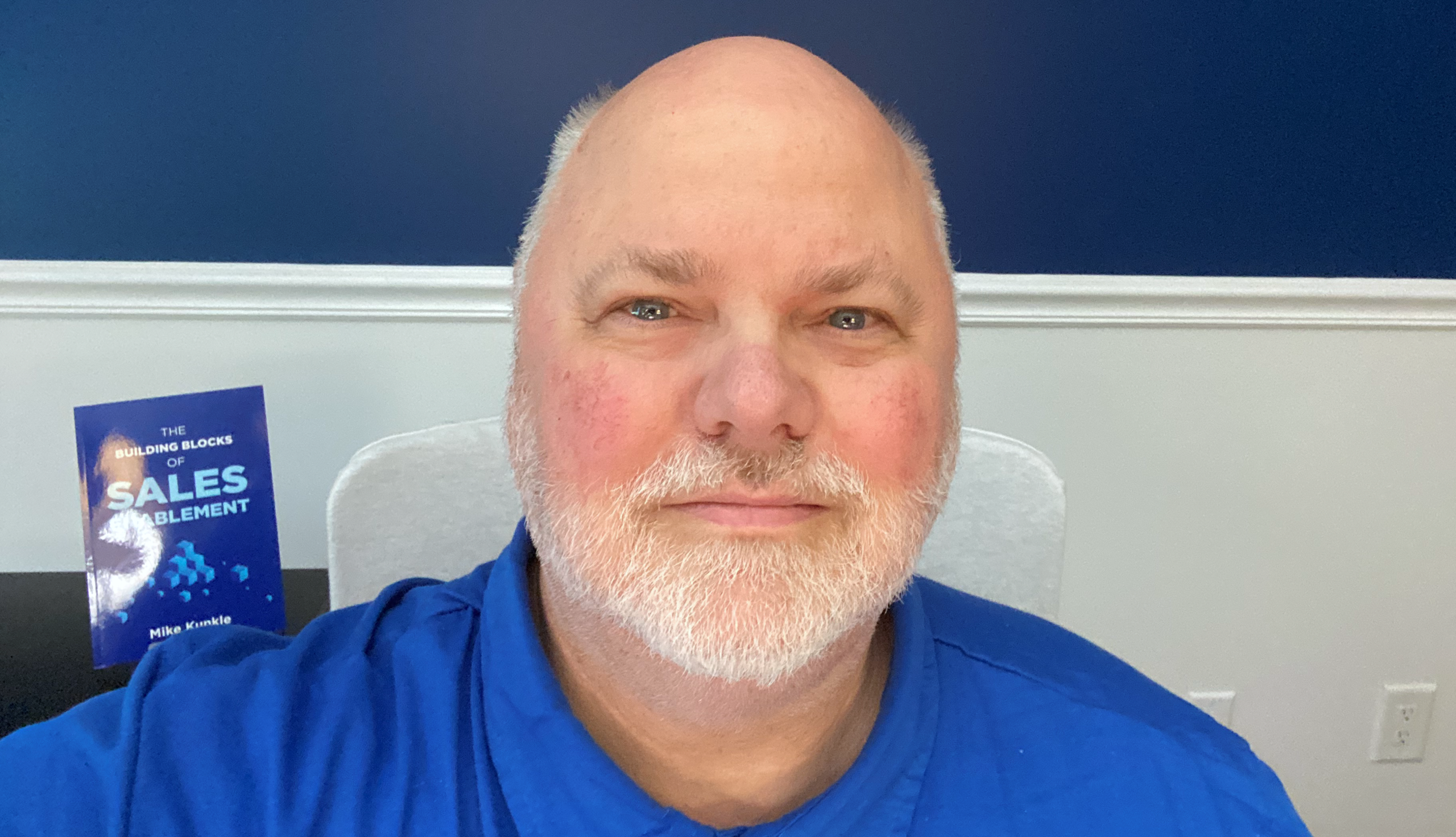Anthony Tripyear: “Enablement is Essential for Staying Ahead in the Game”

An interview with the Director of Global Sales Operations and Enablement at StarTech.com
Anthony Tripyear has over 2 decades of experience working in the tech industry and is currently working as the Director of Global Sales Operations and Enablement at StarTech.com. To get his views on the importance of sales enablement and how it can impact the business, we reached out for an interview. Find out what Anthony had to say about StarTech.com’s approach to sales enablement and his tips on aligning with leadership.
HI ANTHONY, PLEASE INTRODUCE YOURSELF AND YOUR ROLE.
Hello, my name is Anthony Tripyear. For over 20 years I’ve been deeply anchored in the technology industry. I've spent the last few years leading global Sales Operations and Enablement at StarTech.com, where I’m now in my tenth year. My approach to driving growth, effectiveness and efficiency is rooted in understanding our customers and putting them at the heart of what we do.
My focus is enabling our end customers and their technology solutions through our channel sales model. The needs, challenges, and aspirations of our end customers guide our approach and inspire our innovations. It is only by placing our customers at the heart of our strategy that we can deliver solutions that resonate and make a difference.
WHAT IS YOUR APPROACH TO SALES ENABLEMENT AT STARTECH.COM?
I am fortunate in that I get to talk to our customers around the world every week. My approach is to listen and understand. We are an accessories vendor and, as such, we aren't the primary part of any technology stack, but it is our products that can make the difference between a solution working well and being a massive headache, and they can have a dramatic impact on the user experience.
Products such as ours often represent a fraction of the total IT budget of a business, but they can make a huge impact. By understanding this impact, we innovate around the product and create IT friendly solutions, but also tailor our approach to delivering value.
One example of Enablement in action is how we approach international business. Through understanding some of the pain points that IT professionals have in multinational organisations, we are able to deliver a business model that allows our product to be shipped seamlessly to multiple locations around the world without issue. Our approach to localisation of product information creates a seamless and consistent customer experience. Through listening to our customers, we know that by supplying the appropriate compliance & regulatory documentation proactively and not on request, weeks of time and miles of red tape can be saved and delays prevented. By creating a seamless process, we ensure our product is in the right place at the right time, ready to be deployed, safe in the knowledge that it’s going to work in the customer’s environment.
MANY BUSINESSES TODAY VIEW ENABLEMENT AS A NICE ADD-ON, RATHER THAN AN INTEGRAL, STRATEGIC FUNCTION. DO YOU ENVISION THIS CHANGING?
I do envision that changing. The technology industry has seen some challenges during 2023 and whilst there is generally a sense of optimism as we look to 2024, as the current year rolls on we’ve seen analysts consistently revising full year forecasts down as the PC market has faltered. Challenging environments such as these are opportunities to ask questions of strategy, and it’s here where I also see an opportunity for enablement to flourish and become more entrenched at the core of business operations.
When times are good, strong revenue and growth can paper over the worst cracks in strategy, but when times are tough, the cracks start to be exposed and with them, opportunities to improve and refine the approach.
One way to look at Enablement during tough times is to imagine an experience akin to playing a game on a basic computer. It works, but you’re noticing it's slowing down, and the graphics aren't great. There are upgrades available that could speed up the computer and make the game look amazing.
Right now, I believe some businesses see Enablement as this type of optional upgrade. Up to now, their game (their product/service) has been OK without it. However, things are slowing down and as they start to look at options, they see that with the upgrade, the game runs smoother and attracts more players. An optional upgrade becomes a game-changer. I believe this could well be the case with Sales Enablement.
For us in the technology industry, an approach to Enablement could mean having better tools to develop products, more training for Sales to understand products and value propositions, or resources to help customers use the technology better.
Over time, as businesses see how much better and faster they can be with the ‘upgrades’ that Enablement represents, it’s my belief that they will come to the view that it's not just a nice-to-have, but essential for staying ahead in the game.
HOW DO YOU ALIGN WITH LEADERSHIP TO GET BUY-IN?
My approach is to create clarity and alignment that drives commitment. Patrick Lencioni wrote: ‘If you could get all the people in an organisation rowing in the same direction, you could dominate any industry, in any market, against any competition, at any time.’ This is what guides me when attempting to align with leadership.
I have come to learn that a deliberate approach is required. Getting buy-in for any kind of strategy requires clear communication, evidence-based arguments, and a solid understanding of the priorities of the leadership. Here are some core principles I like to remind myself of when attempting to align:
Connect to the Business: Understand what's important to leaders and begin by tying the benefits of Enablement directly to these priorities. Demonstrate an understanding of the key issues the business is facing and show how Enablement can address them specifically. Align the approach with the company's long-term vision and goals. Leaders are more likely to buy into something that fits seamlessly with where they see the company going in the future.
Numbers: Present stats or case studies that highlight the benefits of Enablement. For example, if another business increased sales by X% after implementing a similar strategy, that's compelling evidence. Leaders appreciate clear and concise data.
Start Small: Instead of trying to roll out a huge plan immediately, suggest a pilot project. Give your leaders an opportunity to see the benefits of Enablement in action without committing to a large-scale change right away.
Regular Updates: Keep leadership in the loop. Share successes, challenges, and the progress of any initiatives. Create transparency to build trust.
Engage Champions: Per Jim Collins: ‘Great vision without great people is irrelevant.’ If there are influential people in the organisation who see the value of Enablement, involve them. There's strength in numbers, and having those voices echo the same message adds credibility.
Be Open to Feedback: Present your ideas but be open to input. There is context that you cannot possibly know that will be shared with you and leaders will have valuable insight that can make your strategy more effective. Feedback is how we improve – embrace it.
LASTLY, WHAT ADVICE WOULD YOU GIVE TO ENABLEMENT LEADERS SEEKING TO PROVE THEIR IMPACT?
I’m not great at giving advice, but this is how I’d recommend someone new to Enablement approach their role:
Learn and Adapt: Take the time to really understand your business, keep on top of updating your knowledge, and be ready to pivot and change your approach when needed.
Build an Internal Network: Connect with people across the organisation. Understand their goals and pain points. Listen to their needs and solicit their feedback. When I spoke on the same topic at your Sales Enablement event last year, I highlighted the importance of having a deliberate internal communication and networking strategy to create alignment and promote the cause of Enablement, especially when most of us are not office-based most of the time. Seeking regular, structured check-ins with one’s leaders is an effective way not only of getting your voice heard, but also getting essential context on business priorities and understanding what’s important to them.
Measure Success: Peter Drucker famously wrote: ‘What gets measured, improves.’ Use numbers to show success. Demonstrate what's working and where you have opportunities to improve. Use the language of those to whom you’re reporting.
Most Importantly: By being curious and asking questions, you can get to the heart of what your leaders are prioritizing and how you can help them achieve their goals. Demonstrating how Enablement can make leaders more successful is a great way of not only aligning the approach to the business strategy, but also a short cut to gaining credibility.

Anthony Tripyear
Director of Global Sales Operations and Enablement at StarTech.com
Want to learn from other industry leaders? Read all Engage Sales interviews here.


